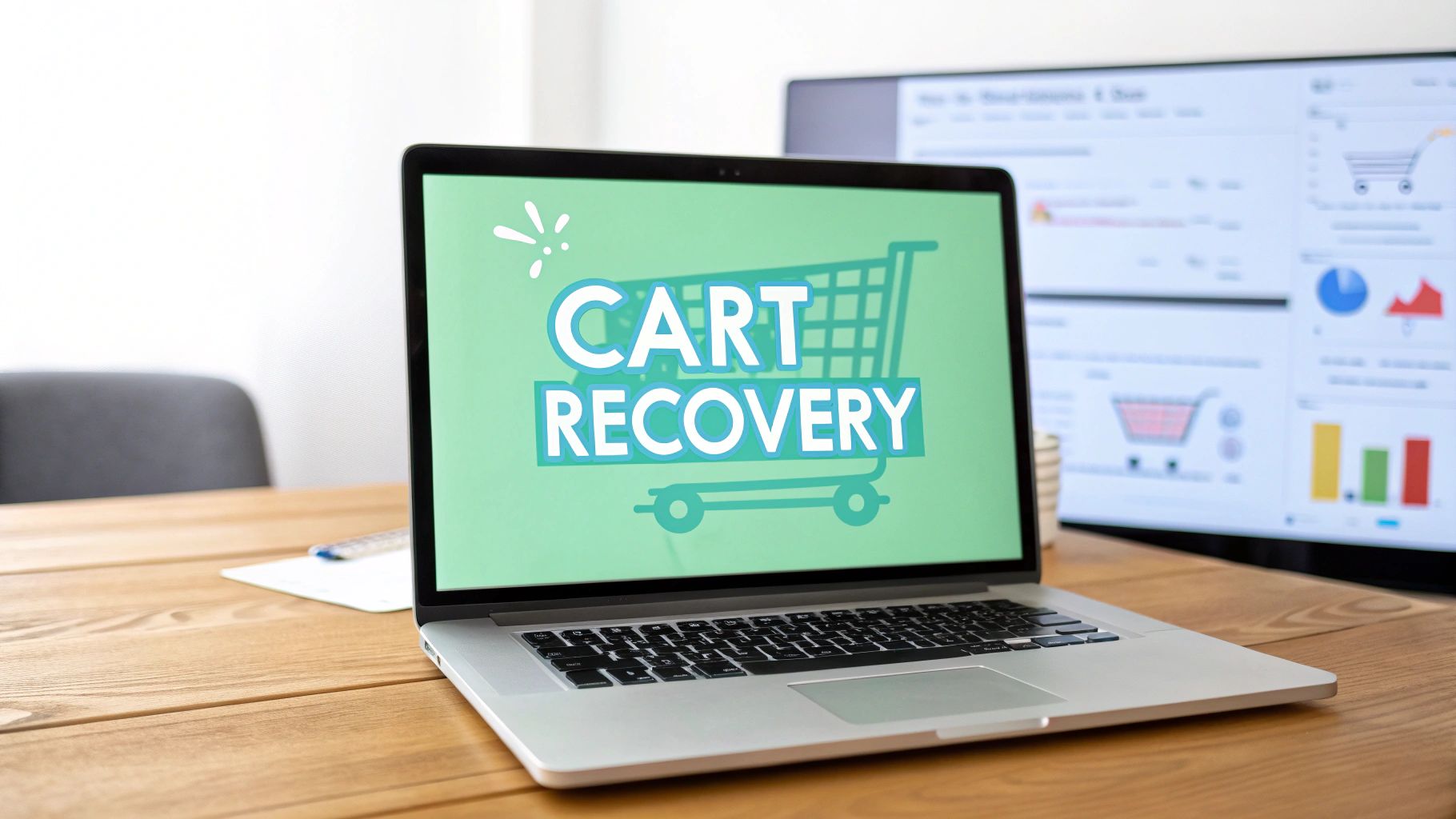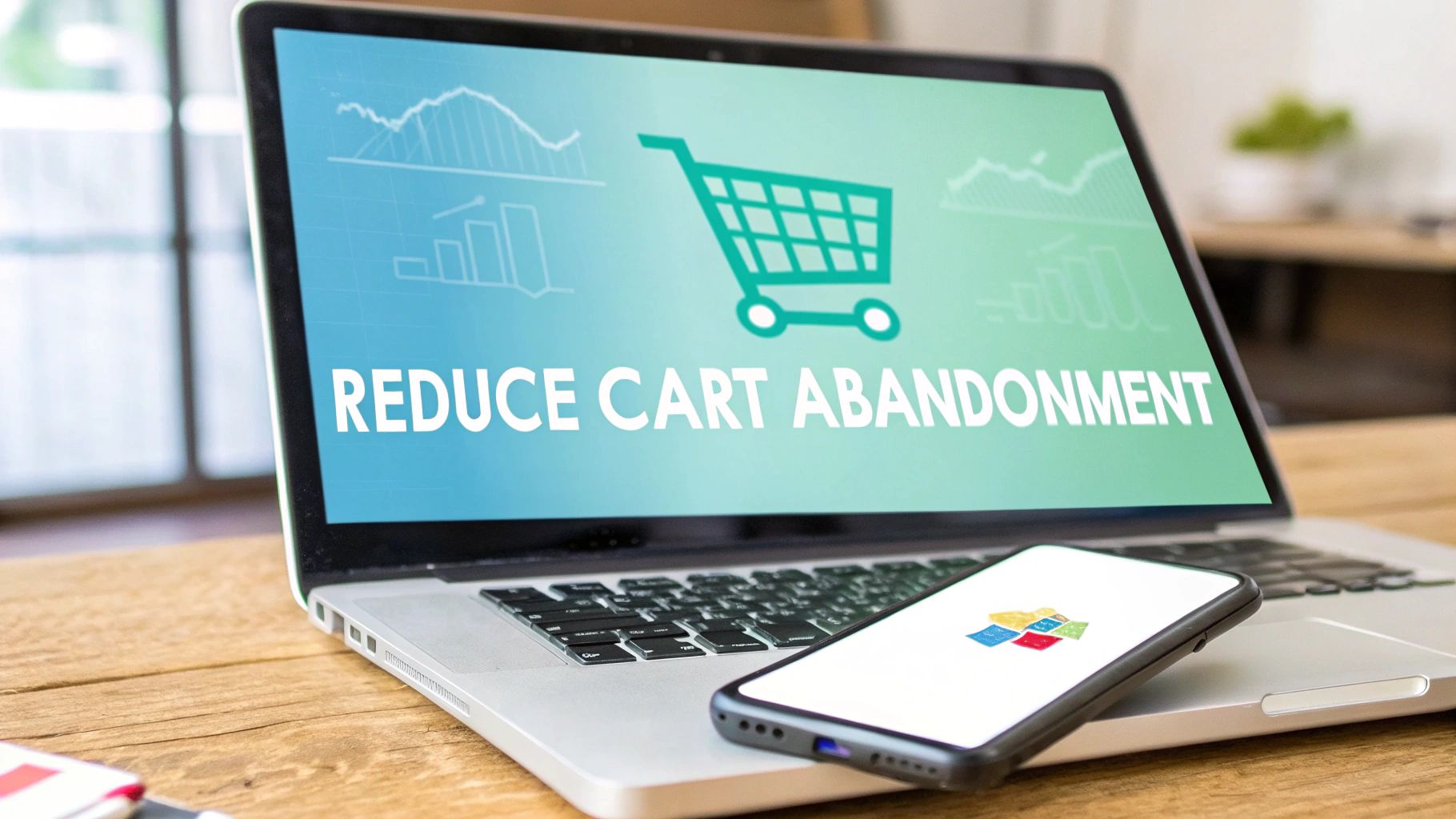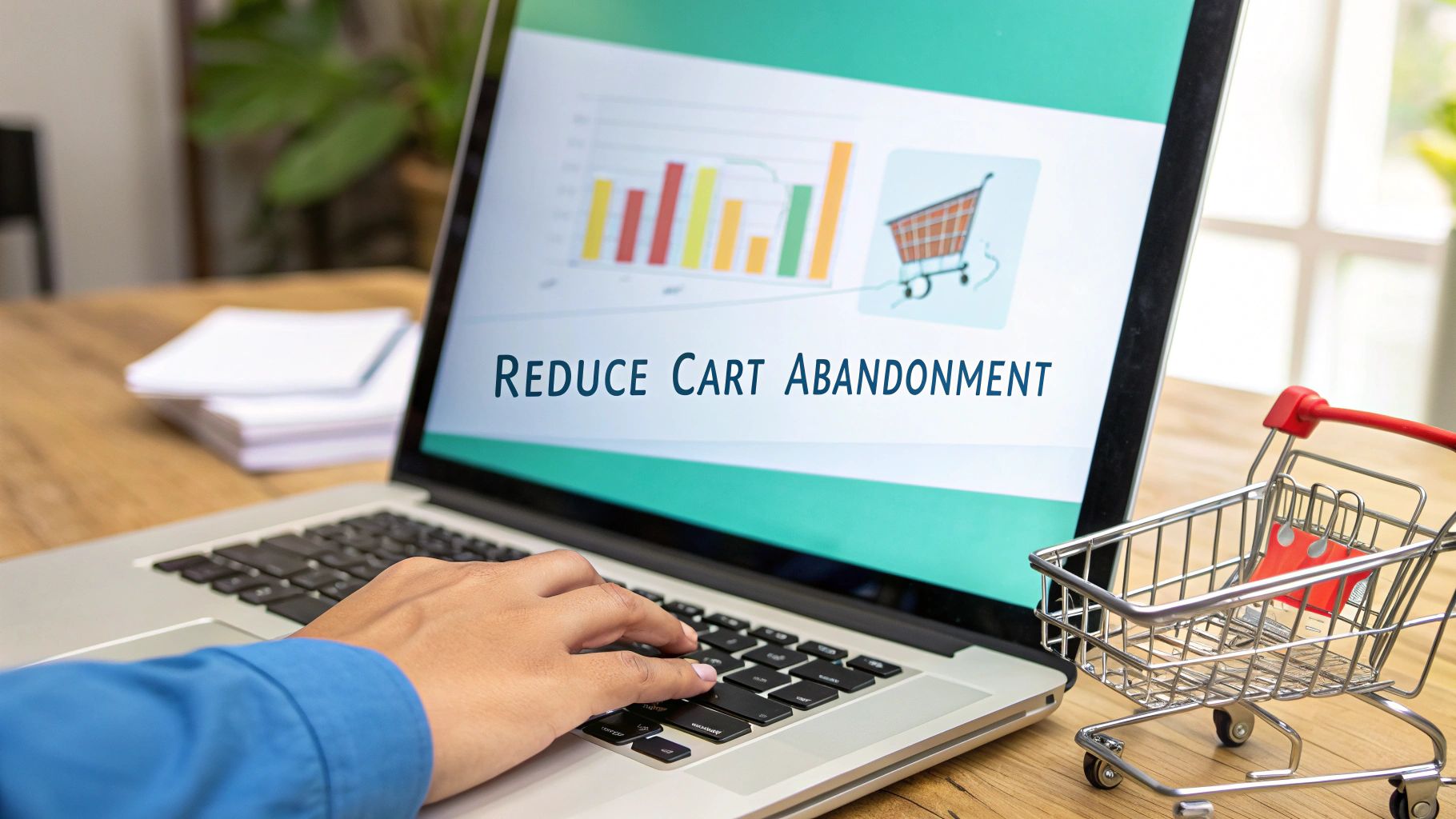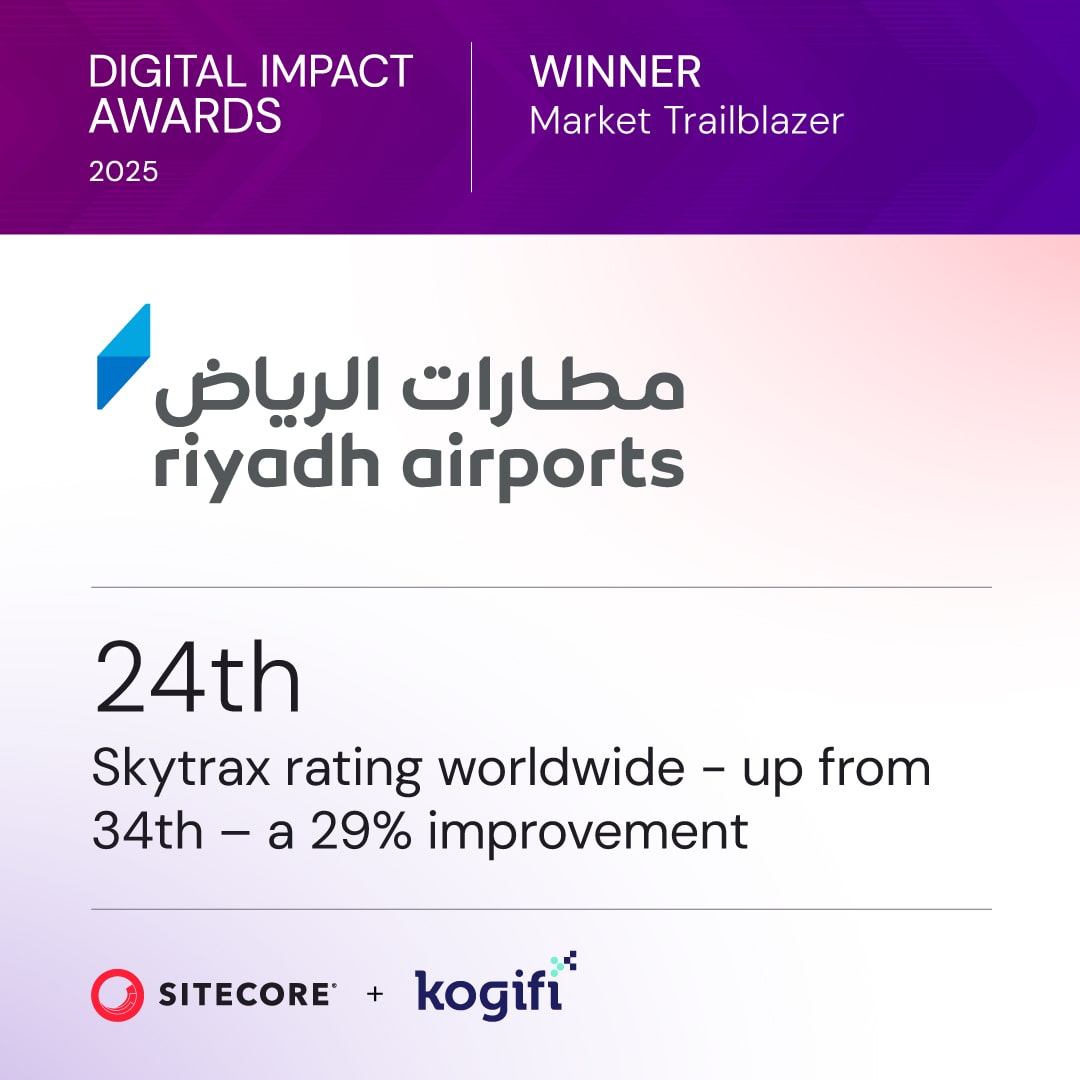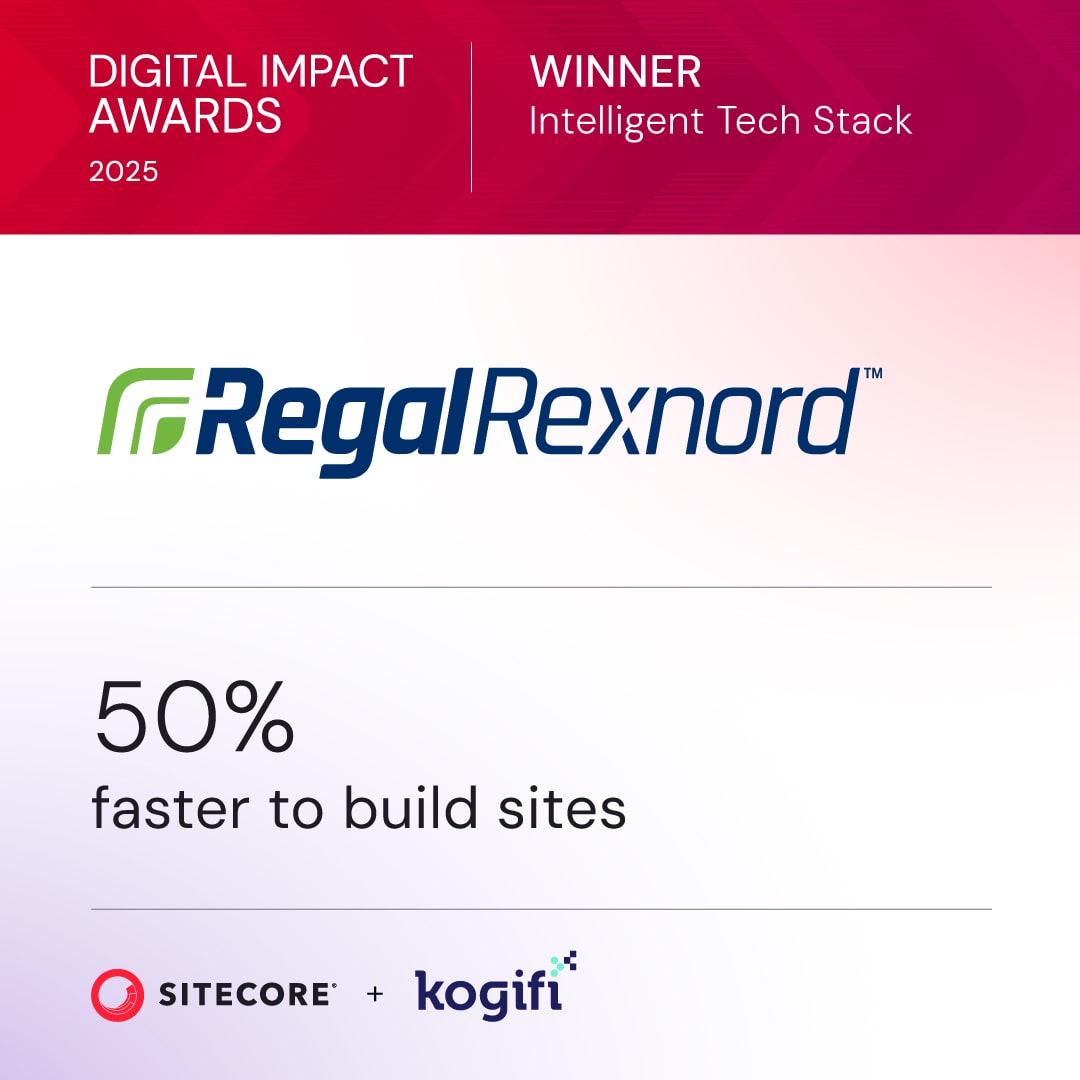Think of a Digital Experience Platform (DXP) as the central nervous system for your entire digital ecosystem. It’s an intelligent platform that weaves together your customer data, content, and commerce tools. The goal? To make sure every customer interaction feels connected, personal, and completely seamless, no matter which channel they’re on.
What Is a Digital Experience Platform Anyway
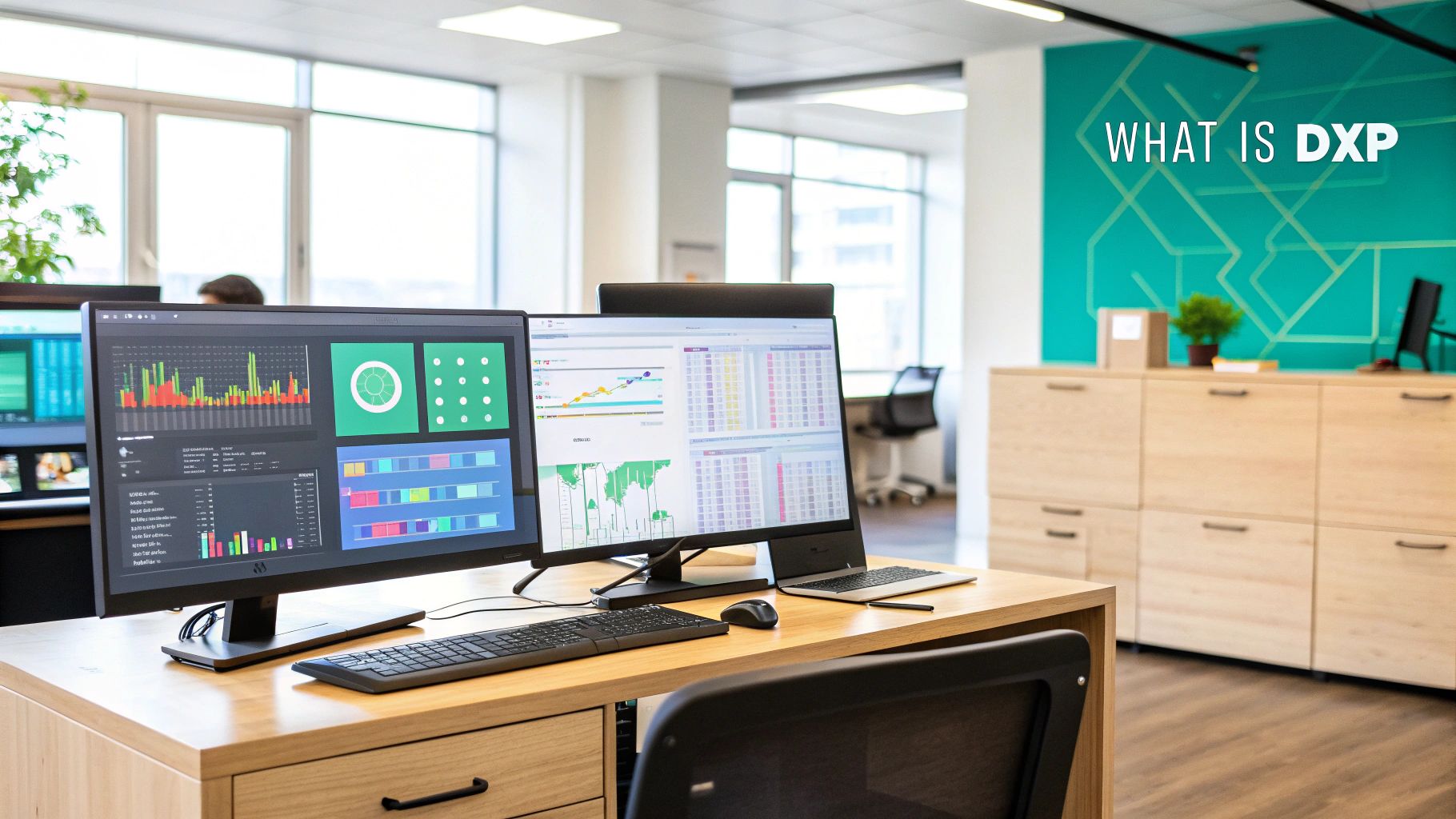
Many businesses still juggle separate tools for their website, mobile app, email marketing, and e-commerce. This siloed approach often leads to disjointed and frankly frustrating customer journeys. A DXP is built to solve this exact problem by unifying everything into a single, cohesive system.
Imagine an orchestra where every musician is playing from a different sheet of music—the result would be chaos. A DXP acts like the conductor, ensuring every instrument (or digital channel) plays in perfect harmony. It coordinates the timing, rhythm, and flow of information to create a beautiful and consistent customer experience, which is essential for building loyalty and driving growth. This kind of coordination is a core part of any successful digital transformation strategy.
From Simple Websites to Cohesive Experiences
The jump from a basic Content Management System (CMS) to a DXP isn't just a tech upgrade; it’s a major shift in business strategy. A CMS is really just built to manage content on a single website. A DXP, on the other hand, is designed from the ground up to manage the entire customer relationship across every digital touchpoint.
This is where platforms like Sitecore really shine. The Sitecore product portfolio is designed to connect every piece of the customer journey, from their first moment of awareness all the way through to post-purchase support. For example, it can track a user's behavior on your website, use that data to personalize content on a mobile app, and then send a perfectly timed follow-up email. That level of integration is just not possible with a collection of standalone tools.
The core purpose of a DXP is to move beyond simply managing content. Its true value lies in orchestrating personalized, data-driven experiences that feel contextually relevant to each individual user at every single touchpoint.
The Role of SharePoint in the Ecosystem
While a platform like Sitecore masters the external, customer-facing experience, tools like SharePoint play a critical role on the inside. SharePoint solutions are often the backbone for powerful intranets and collaboration portals that streamline how employees work together.
When you integrate a Sitecore DXP with a SharePoint-powered digital workplace, you create a powerful combination. It ensures that both your customer and employee experiences are seamless. The ultimate goal is to create a frictionless environment for everyone, and a great place to start is by learning how to improve customer experience across the board.
Exploring the Core Components of a DXP
To really get what a DXP is, you have to look under the hood at its building blocks. Today's platforms aren't single, monolithic applications; they're more like a collection of specialized services working in harmony. This fundamental shift is why the DXP market is projected to hit an incredible $41.84 billion by 2035, as detailed in a recent report on the DXP market's future. Businesses are realizing they need a unified tech stack to manage experiences across every customer touchpoint.
These core components are designed to talk to each other, constantly sharing data and insights to build a smooth, connected customer journey from the first click to the final purchase.
The infographic below shows how these pieces fit together in a modern DXP.

As you can see, it’s all about the interplay between content, data, personalization, and commerce engines running in a flexible, cloud-based environment.
The Rise of Composable Architecture
The real game-changer here is the move to a composable architecture, which is a huge strength of the Sitecore ecosystem. Instead of getting stuck with a rigid, all-in-one suite, a composable DXP is built from interchangeable, best-of-breed components.
Think of it like building with specialized Lego blocks. You get to pick and choose the exact pieces you need to create the perfect solution for your business. For instance, Sitecore offers distinct products that serve as these blocks:
- Sitecore XM Cloud: A powerful, SaaS-based headless Content Management System (CMS) for creating and pushing content to any channel you can imagine.
- Sitecore CDP & Personalize: A Customer Data Platform that pulls together customer information from every source to give you a single, clear picture, combined with an engine for real-time personalization.
- Sitecore OrderCloud: A MACH-certified, API-first headless commerce engine built for designing complex B2B and B2C buying experiences.
- Sitecore Discover: An AI-powered product discovery and search tool that delivers relevant results to drive conversions.
This modular approach gives you incredible agility. You can add, remove, or swap out components as your business needs change without having to tear down and rebuild your entire system. If you want to go deeper, you can learn more about composable DXPs for scalable personalization in our detailed guide.
A composable DXP empowers you to assemble your ideal digital stack. It’s about choosing the right tool for each job, not being locked into a one-size-fits-all platform that dictates your strategy.
To make the difference clearer, here's how a modern composable DXP stacks up against an older, monolithic one.
Composable DXP vs Monolithic DXP Components
As the table shows, the composable model offers far more freedom and adaptability, which is crucial in today's fast-moving market.
While Sitecore is a leader in customer-facing experiences, you can even integrate it with internal tools like SharePoint to manage the digital workplace. This creates a powerful combination where your employee and customer systems work together, which is a huge plus for organizations already invested in the Microsoft stack. The flexibility to integrate systems like this is a key advantage of the composable model.
How a DXP Drives Real Business Growth

Knowing the technical parts of a DXP is one thing, but the real magic is in the business results it delivers. At its core, a DXP turns smart technology into tangible growth by completely changing how you connect with customers and run your internal operations.
The biggest immediate win comes from tearing down data silos. It’s nearly impossible to create a smooth, connected experience when customer information is scattered all over the place. A DXP, especially one with a powerful Customer Data Platform (CDP) like Sitecore CDP, pulls all that scattered information into one unified profile for each customer.
This complete view is the bedrock of true personalization. Once you understand a customer's full history and what they’re doing right now, you can deliver experiences that aren't just customized, but genuinely context-aware. Getting your customer data integration solutions right is the key to making this happen.
From Data to Dollars: A Retail Example
Let's walk through how this plays out in a real-world retail scenario with Sitecore. Imagine a customer browses for running shoes on your website but leaves without buying. A little later, she's near one of your physical stores and opens your mobile app.
Instead of a generic pop-up, the DXP connects her browsing history with her current location. It then sends a perfectly timed push notification to her phone: "Hi, Jane! Still thinking about those running shoes? Stop by our downtown location just two blocks away and get a free gait analysis."
That single, connected interaction accomplishes several things at once:
- Drives In-Store Traffic: It builds a bridge between the digital window shopping and a physical sale.
- Increases Conversion: The offer is incredibly relevant and timely, making a purchase far more likely.
- Builds Loyalty: The customer feels understood, not just targeted, strengthening her relationship with your brand.
Future-Proofing with an Agile Tech Stack
Beyond the immediate sale, a DXP offers serious long-term strategic advantages. It streamlines internal workflows so marketing and IT teams can launch campaigns and build new digital experiences much faster and more efficiently.
A DXP is not just a tool for today; it’s an investment in agility. It gives your business an adaptable technology foundation built to handle whatever customer expectations and market changes come next.
This boost in operational efficiency has a direct impact on your bottom line. It frees up your team to focus on innovation and big-picture strategy instead of just keeping the lights on. It’s all about building a system that grows right alongside your business.
Seeing Your DXP at Work in Key Industries
The best way to get a feel for what a DXP can do is to see it in action. Theory is one thing, but real-world application is where the platform truly proves its worth.
The demand for these industry-specific solutions is growing fast. In 2024, North America accounts for nearly 38% of the global DXP revenue share, and Europe is on track to hit a market value of around USD 4.2 billion by 2025. This isn't just a trend; it's a clear signal that businesses are investing heavily in digital-first strategies. For a closer look at the numbers, you can explore detailed market growth insights.
Take manufacturing, for example. A platform like Sitecore is brilliant at building complex B2B portals. These aren't just websites. They're powerful hubs for managing complicated sales cycles, vast distributor networks, and critical partner relationships—all from one place.
Tailoring Experiences in Regulated Fields
Now, let's step into a more regulated world, like financial services. Here, a DXP is the engine behind secure and deeply personal digital banking. By pulling together all customer data, banks can offer up smart product recommendations or send proactive service alerts. In a crowded market, that's how you build real trust.
It's a similar story in healthcare, where DXPs help manage the entire patient journey. We're talking about everything from scheduling appointments online to delivering personalized health updates through a secure portal. To see how this works in practice, it’s worth checking out the unique challenges of building a digital experience in healthcare.
The true power of a DXP is its ability to adapt. Whether supporting a complex B2B supply chain or a secure patient portal, the platform provides the foundational tools to create connected, industry-specific experiences.
The SharePoint Connection for the Internal Experience
While Sitecore is a master of the external, customer-facing journey, we can't forget about the people inside the company. The employee experience matters just as much. This is where SharePoint solutions enter the picture, especially for organizations already invested in the Microsoft stack.
By integrating SharePoint, you can create a powerful internal digital workplace. This gives your team the same kind of seamless, connected digital environment that you're building for your customers. When your internal processes are smooth, your team is better equipped to deliver exceptional service—creating a powerful link between happy employees and happy customers.
Choosing the Right DXP for Your Future
Picking a DXP isn't just another software purchase—it's a foundational business decision. The right platform will anchor your digital ambitions and clear the path for future growth. To make the right call, you need to look beyond flashy feature lists and get down to the core architectural principles.
The first major fork in the road is the composable versus monolithic debate. A modern, composable DXP, like what you’ll find with Sitecore, gives you incredible flexibility. Instead of being locked into a rigid, all-in-one system, you get a collection of specialized, best-in-class tools that you can piece together to fit your exact needs. This API-first approach is non-negotiable if you want seamless integrations and future-proof scalability.
Evaluating Key Platform Capabilities
Cloud-native architecture is another deal-breaker. Platforms built from the ground up for the cloud, such as Sitecore XM Cloud, simply deliver better performance, scalability, and security. The market trends are crystal clear on this: cloud-based DXPs command a dominant market share of roughly 67.7% in 2024. Why? Because businesses are prioritizing solutions that scale without breaking the bank or the IT team.
AI is also changing the game. With nearly 94% of banking leaders now prioritizing platforms with AI-driven automation for tasks like content creation, it's obvious where the industry is headed. For a deeper dive into these market shifts, you can explore detailed insights on DXP market trends.
Choosing a DXP means investing in a technology partner, not just a product. Prioritize vendors with a clear innovation roadmap, a strong support system, and a vibrant partner network.
Finally, don't overlook the partner ecosystem. A vendor with a strong, experienced network of partners is invaluable, and this is an area where Sitecore truly shines. These partners bring the deep expertise you need to implement, customize, and get the most out of your platform, ensuring you see a real return on your investment.
To see how the top options stack up, check out our in-depth guide on the best digital experience platforms available today. This kind of strategic evaluation ensures you pick a platform that not only solves today's problems but is ready for whatever comes next.
Common Questions About Digital Experience Platforms
When you start digging into what a DXP is, a few questions always seem to pop up. Getting those sorted out is the key to understanding the real-world value of platforms like Sitecore. Let's tackle some of the most common ones.
What Is the Main Difference Between a DXP and a Traditional CMS?
A traditional Content Management System (CMS) is built to do one thing really well: manage content for a single channel, usually your website. A Digital Experience Platform (DXP) is a whole different ballgame.
While a DXP absolutely includes CMS functionality, it also pulls in other essential tools like a Customer Data Platform (CDP), personalization engines, and e-commerce capabilities. Think of it this way: a CMS manages your content, but a DXP like Sitecore manages the entire customer journey across every digital touchpoint. The CMS is a star player, but the DXP is the coach who coordinates the whole team's winning strategy.
How Does AI Enhance a DXP's Capabilities?
AI is what makes modern personalization possible at scale. Let’s be realistic—manually creating unique experiences for thousands of individual users just isn't feasible.
AI algorithms in platforms like Sitecore analyze massive customer datasets in real time to predict behavior, recommend relevant content, and automate journey orchestration. This moves personalization from a manual task to an automated, intelligent system.
For instance, Sitecore’s AI can automatically test different content variations for specific audience segments. This makes sure every interaction is optimized for engagement and conversion, all without your marketing team having to lift a finger. It’s all about working smarter, not harder.
Is Implementing a DXP a Complex Process?
How complex the implementation is really comes down to the DXP’s architecture. Old-school, monolithic platforms can lock you into a long, all-or-nothing deployment that’s both risky and expensive.
Thankfully, a modern composable DXP from Sitecore offers a much more flexible and sensible path. This approach lets you roll out the platform in phases, perfectly aligned with your business priorities.
You can start small and build from there:
- Begin with a core component like Sitecore's XM Cloud (a powerful headless CMS) to get your content operations up to speed.
- Add capabilities as needed, such as Sitecore Personalize or OrderCloud, when you're ready to dive into advanced personalization or commerce.
- Integrate with existing systems, like SharePoint for internal collaboration, to build a truly connected ecosystem.
This phased approach takes a lot of the initial complexity off the table and helps you see value much faster. It allows you to make a more manageable investment while building a powerful, scalable platform that grows right alongside your business.
At Kogifi, we specialize in designing and implementing powerful Digital Experience Platforms that drive real results. Whether you're working with Sitecore or SharePoint, our team of experts is here to help you build the perfect solution. Let's talk about your digital future.






















